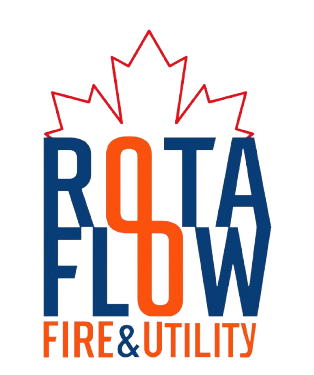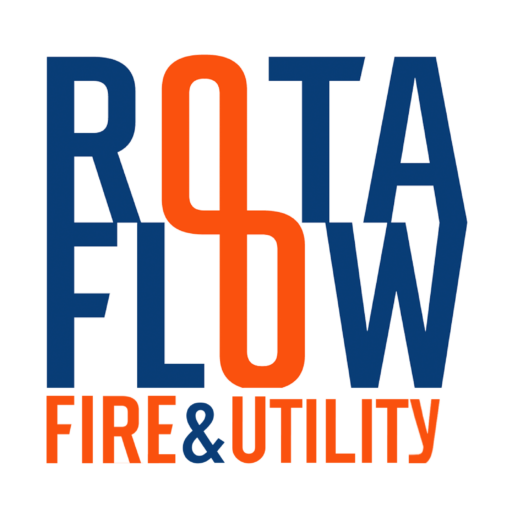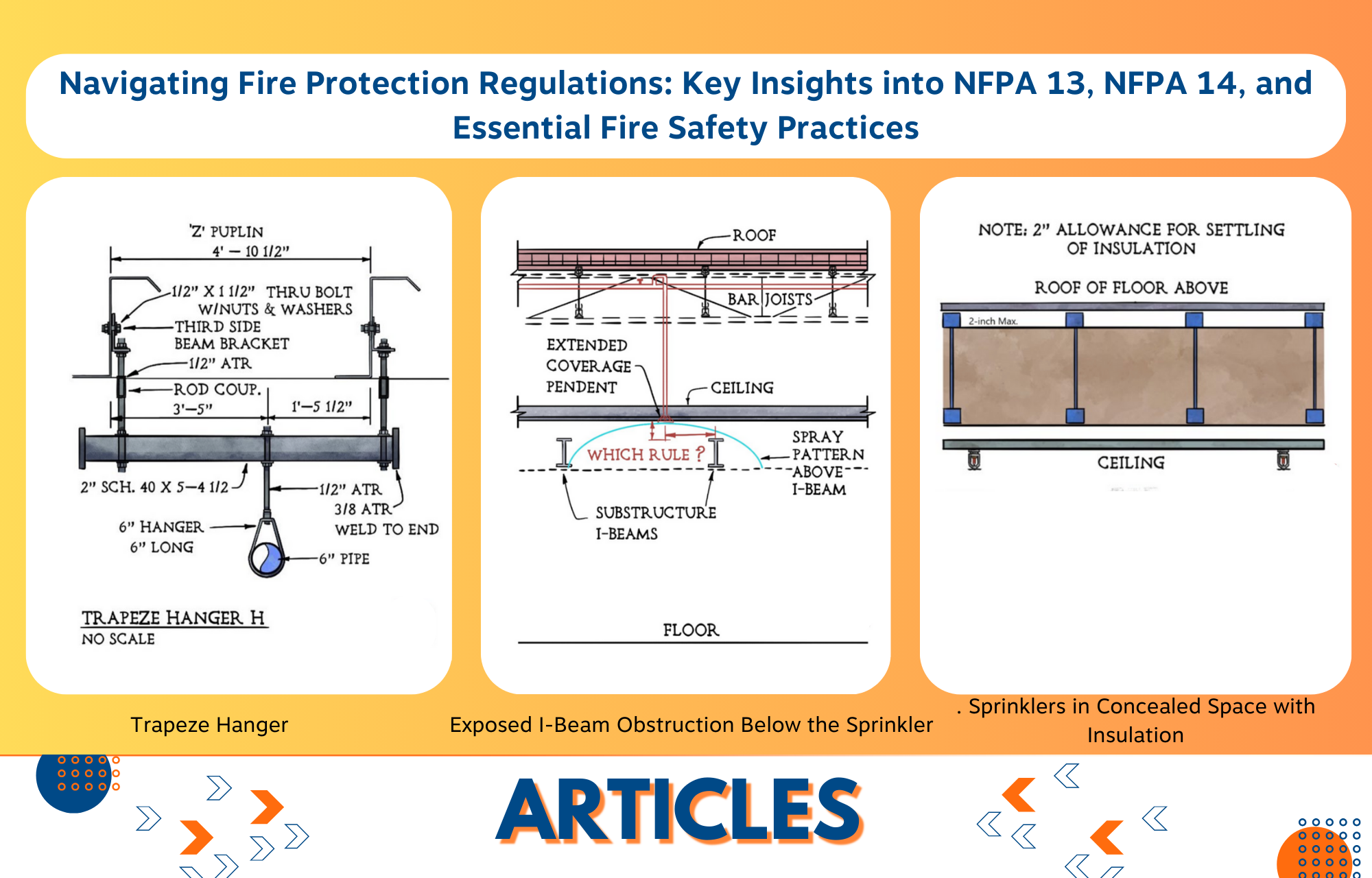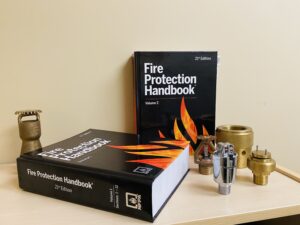Summary: Navigating fire protection laws can be challenging, but comprehending standards such as NFPA 13 and NFPA 14 is critical for maintaining safety and compliance. This blog provides clear insights into various fundamental features of fire protection systems, answering common questions and clearing up misconceptions.
We investigate whether trapeze hangers can employ pipes and nuts/washers, and we describe the requirements for supervisory air pressure monitoring in dry standpipes. We also explain why non-combustible metal balconies require sprinklers, based on different construction types and fire rules. The blog demonstrates how to correctly place Fire Department Connections (FDCs) and the design parameters for ESFR sprinklers in various building heights.
Furthermore, we discuss the need for draft curtains between ESFR and quick-response sprinklers, as well as the advantages of quick-response sprinklers over normal sprinklers in terms of activation speed and safety. The blog also discusses the laws for concealed areas with insulation, particularly when sprinklers are required.
By demystifying these factors, the blog hopes to assist professionals in making informed decisions and ensuring that their fire protection systems match the most recent standards and laws.
1. Trapeze Hanger. Description: Details in NFPA 13 only show the nut/washer and all thread rods for angle iron trapeze members. Question 1. Can a trapeze component made of pipe be supported with a nut, washer, or all-thread rod?
Answer: Trapeze hangers made of pipe, not angle iron, can be hung using nut/washers and thread rods.
According to Section 17.3.5 of the 2019 NFPA 13, hanger assembly components must meet Section 17.1.6’s standards. This section requires a listing of components that directly attach to the pipe or structure. However, hanging rods and fasteners, such as nuts and washers, do not need to be listed if they meet Sections 17.2.2, 17.2.3, and 17.2.4.
The sprinkler pipe is not in the centre of the trapeze hanger, as illustrated in the attached image. However, the equations in A.17.3 can still be used. The section modulus values in Table 17.3.1(a) assume the sprinkler pipe is at the midway of the trapeze hanger’s span. Because the load is not at the midway, the equation (L=4ab/a+b) in A.17.3 can be used to calculate the equivalent length of the trapeze, resulting in a lower section modulus. The annexe indicates that something is an option, not a requirement.

2. Monitoring of Dry Standpipes. Description: According to the 2016 edition of NFPA 14, dry standpipes require supervisory air pressure monitoring (Section 6.1.1). Question 2. Is this section applicable to dry, manual fire standpipes?
Answer: NFPA 14 Standard for the Installation of Standpipe and Hose Systems (2016) does not require supervisory air monitoring for manual dry standpipes.
This section outlines guidelines for monitoring standpipe systems, including manual standpipes that require supervision for proper functioning.
and maintain the system’s integrity. This oversight is necessary for automatic dry standpipe systems.
Supervision can be performed through a central station, a constantly attended local station, or a signal or alarm at the standpipe system’s initiating device.
This section has caused confusion because of its lack of specificity for automatic dry standpipes. Clarification is needed. The technical committee discussed this during the 2019-2024 cycle, and clarifications were made in the 2024 edition.
The most recent edition of the standard now requires all dry standpipes to be supervised with air. The NFPA 72 National Fire Alarm and Signalling Code does not require remote monitoring. Manual dry systems can have local alarms unless otherwise specified.
3. Balconies. Description: The local AHJ has concluded that non-combustible metal balconies with open grate decking require sprinkler protection, citing IFC 705.2.3.1. Question 3. Is the AHJ correct, and are sprinklers required for these balconies?
Answer: The IBC/IFC specifies two prerequisites for putting sprinklers on balconies and decks.
Condition #1: The building is of Type V construction with a roof or deck above. Condition #2 requires that a dwelling or sleeping unit’s outdoor deck, balcony, or ground-floor patio adhere to IBC Section 705.2.3.1. Exception #3.
Exception #3 to Section 705.2.3.1 allows balconies and similar projections to buildings of Type III, IV, and V construction to be Type V and not require a fire resistance rating if sprinklers are installed on the deck or balcony. This clause demands that the deck or balcony satisfy specific construction specifications or be fire-rated. However, sprinklering the deck or balcony eliminates the need for a fire rating.
The code official’s citation of 705.2.3.1 is unclear, as non-combustible decks and balconies already comply with rule 705.2.3. This provision requires that projections from buildings be
Use non-combustible or combustible materials with a 1-hour fire rating, hefty lumber, or fire-resistant treated wood.
If the building is categorised as Type V, sprinkler protection is necessary on the deck or balcony as per Section 903.3.1.2.1, condition #1, as long as there is a roof or deck above. This applies even when the deck or balcony is made of non-combustible materials.
4. Fire Department Connections—Location Requirements. Description: The issue seeks specific restrictions outlined in the NFPA 13 standard for the location and control valves of Fire Department Connections (FDCs). Question 4. What are the NFPA 13 regulations for Fire Department Connection (FDC) position and control valves?
Answer: To find the location criteria for fire department connections (FDC) and control valves, consult NFPA 13.
This depends on the applicable edition of NFPA 13 for the project.
For NFPA 13 (2016 and previous editions):
- “Fire department connections shall be located at the nearest point of fire department apparatus accessibility or at a location approved by the authority having jurisdiction,” the FDC states 8.17.2.4.6.
- Section 8.1.2 states that system valves and gauges must be easily accessible for operation, inspection, testing, and maintenance.
- Section 8.16.1.1.1.1 requires sprinkler systems to have a listed indication valve in an accessible place that controls all automated water sources.
- Section 8.16.1.1.7 requires that control valves be easily accessible and free of impediments.
For NFPA 13 (2019 and 2022 Editions):
- FDC — location — 16.12.5.7: “Fire department connections shall be located at the nearest point of fire department apparatus accessibility or at a location approved by the authority having jurisdiction.”
- System valves and gauges must be conveniently accessible for use, testing, inspection, and maintenance, according to Section 16.1.1.
- Section 16.9.3.1.1 requires sprinkler systems to have a listed indication valve in an accessible place that controls all automated water sources.
- Section 16.9.3.4 requires that all control valves be easily accessible and free of impediments.
- Some model fire codes, like the International Fire Code (IFC), have extra standards for FDCs, including connection height and obstacles.
- In some cases, the system riser and main control valve may be located based on the underground water supply to the building. NFPA 24 limits underground plumbing into buildings to 10 feet in most circumstances.
5. ESFR Design Criteria. Description: Our task is to create an ESFR system for Group A plastics in a 35-foot building that are exposed and not extended. Table 23.3.1 of NFPA 13, 2022 edition does not specify a minimum end-head pressure for a 35-foot building, only displaying a 'dash'. Question 5. Can the pressure listed for a 40-foot building be applied to a 35-foot-high building?
Answer: The requirements for a higher ceiling height can be applied to situations with a lower ceiling height.
Table 23.3.1 shows a “dash” for 25.2K ESFR sprinklers at a 35-foot ceiling height. For a 40-foot ceiling height, exposed non-expanded Group A polymers require 60 psi of pressure. It is allowed to utilise a design strategy for a higher hazard to safeguard a less dangerous arrangement.
To address confusion caused by “dashes” in the table, the 2025 edition will modify it to include acceptable criteria. Table 23.3.1 in the 2025 version shows that a K-25.2 can protect non-expanded Group A plastics in a 35-foot building with a minimum working pressure of 60 psi.
In First Revision No. 1218, the committee stated that design plans for higher dangers were completed in blank cells to preserve less dangerous arrangements.
6. Exposed I-Beam Obstruction Below the Sprinkler. Description: Substructure I beams will be erected below the ceiling, with extended coverage sprinklers to protect the floor. Question 6. Should we utilise Figure 8.8.5.2.1.3(b) from the 2016 version of NFPA 13 when tossing over an I-beam flange, or Figure 8.8.5.2.2 if the impediment is suspended?
Answer: The purpose of suspending the I-beam below the sprinklers, as shown in the graphic, is to ensure water coverage both above and below it without creating a substantial shadow on the other side. In this case, the “four-times rule” from Section 8.8.5.2.1.3 would apply.
The four-times rule may not be successful for solid continuous impediments like beams due to sprinklers’ inability to disperse water above and below the obstruction; however, this example is an exception. Water can flow both over and under the beam, so the four times rule applies. The I-beam is not regarded as an impediment like partitions, drapes, or room dividers; hence, the partition rule from Section 8.8.5.2.2 does not apply.

7. Did NFPA publish a 2022 edition of NFPA 14? Description: The 2024 edition of the International Fire Code, IFC, Chapter 80, ``Referenced Standards,`` includes the 2022 edition of NFPA 14. The NFPA's website does not list a 2022 edition. Question 7. The 2024 version of NFPA 14 does not mention a 2022 edition, instead focussing solely on the 2019 edition and 2024 edition. Was NFPA 14 published in 2022?
Answer: There is no 2022 edition of the NFPA 14 Standard for the Installation of Standpipe and Hose Systems.
The most recent edition (2024) became effective on September 14th, 2023, following an extension of the edition cycle.
The 2024 edition of NFPA 14 is mentioned in the 2024 NFPA 1 Fire Code. On January 19th, 2024, an errata was sent to the IFC Chapter 80 Reference Standards to update the reference to the 2024 edition of the standard.
8. Cloud Ceiling: Ordinary Hazard Group II. Description: According to the 2019 edition of NFPA 1, a project with cloud ceilings falls under the usual hazard group 2 occupation. The clouds are over 4 feet wide, with a gap width-to-ceiling ratio of 0.75 inches every foot of ceiling height. According to Table 9.2.7.1, each sprinkler may protect up to 150 square feet. Question 8. Is the protection area of 150 square feet correct? Ordinary hazard occupancies have a maximum of 130 square feet per sprinkler.
Answer: For a cloud ceiling over 4 feet with a 0.75 gap/ceiling ratio in an ordinary group 2 occupancy, the maximum protection area and spacing is 130 square feet per sprinkler and 15 feet between sprinklers.
Table 9.2.7.1 specifies a maximum protection area of 150 square feet per sprinkler for the cloud ceiling. However, Section 9.2.7.1(3) requires compliance with Section 9.2.7.2.
Section 9.2.7.2.3 states that the maximum spacing and protection area cannot exceed the limitations outlined in Table 10.2.4.2.1(a) for light hazards and Table 10.2.4.2.1(b) for ordinary hazards.
According to Table 10.2.4.2.1(b), the maximum protection area for average hazard occupancies is 130 square feet per sprinkler, with a 15-foot spacing limit.
9. Plastics Stored Under 5 Feet in Height Description: The concern is whether the 2022 edition of NFPA 13 has any suggestions for protecting Group A plastics stored under 5 feet tall, as this information was previously available in the 2016 version. It also questions the safety of storing exposed, unexpanded polymers on the floor up to 5 feet tall with an OH2 density near the ceiling. Question 9. Are there recommendations for protecting Group A plastics under 5 feet in the 2022 edition of NFPA 13? It was previously listed in Table 13.2.1 of the 2016 edition. The 2022 version lacks coverage of this topic. Is it still safe to store exposed, unexpanded polymers on the floor up to 5 feet tall with an OH2 density at the ceiling? Please advise.
Answer: The 2022 edition of NFPA 13 still includes design guidelines for storing exposed, non-expanded plastics at OH Group 2 densities in piles of 5 feet or less.
Table 13.2.1 from the 2016 edition of NFPA 13 has been moved to Chapter 4 of the 2022 edition. Refer to Table 4.3.1.7.1.1: “Discharge Criteria for Miscellaneous Storage.” “Up to 12 feet in height.”
Table 4.3.1.7.1.1, headed “Miscellaneous Storage,” includes parameters for low-piled storage as well. This is stated clearly in Section 4.3.1.7.2. Refer to Section 4.3.1.7.2.4 for the conditions for low-piled storage of Group A plastic commodities up to a maximum height of 5 feet. This includes exposed, nonexpanded plastic.
10. ESFR Draft Curtains. Description: The question concerns whether draft curtains are required to separate ESFR sprinklers from quick-response sprinklers. Question 10. Are draft curtains necessary to separate ESFR sprinklers from quick-response sprinklers?
Answer: No. Installing quick-response sprinklers in the adjacent space eliminates the need for a draft curtain.
NFPA 13, 2016 edition, Section 8.4.6.4.1 requires a draft curtain to segregate sections and ensure sprinklers only function on the affected side during a fire. If one side has ESFR sprinklers and the other employs normal response sprinklers, opening sprinklers far away from the fire source may result in an excessive number of sprinklers being opened. If the typical hazardous area also has quick-response sprinklers, a draft curtain is not necessary.
ESFR sprinklers include quick response components with an RTI of 50 (meters-seconds)1/2 or less.
11. Standard Response vs. Quick Response Description: The paragraph discusses an incident in which a fire prevention engineer placed standard response sprinklers rather than quick response sprinklers in a low-risk hospital area. The engineer explained his decision by arguing that regular sprinklers are more sustainable and have a longer lifespan, citing test findings showing a 75-year lifespan for standard sprinklers against 40 years for quick response sprinklers. Question 11. In one of my situations, a fire protection engineer installed standard response sprinklers rather than quick response ones in a hospital area with low risk. He claimed that the standard sprinklers were more sustainable and had a longer lifespan than the quick response sprinklers, with tests showing 75 years for standard response and 40 years for quick response.
Answer: Many experts in quick-response (QR) technology disagree with the rationale for sustainability. QR sprinklers originated from a 1970s article titled America Burning. The goal was to create a faster-operating fire sprinkler with improved life safety benefits. This topic has been extensively discussed in fire science research articles and books, but will be summarised here for brevity.
Research indicates that QR sprinklers can respond up to 4-5 times faster than standard response (SR) fire sprinklers. NFSA testing indicates that QR sprinklers dramatically reduce activation times in fires compared to SR sprinklers, with faster operation and lower compartment fire temperatures.
It is true that QR sprinklers require more regular testing. The 1996 edition of NFPA 13 recognised the benefits of QR sprinklers, including smaller design areas and fewer sprinklers. However, because QR sprinkler technology was newer than SR sprinklers, a shorter testing period was required.
NFPA 25, the Standard for the Inspection, Testing, and Maintenance of Water-Based Fire Protection Systems, does not require replacing fire sprinklers at regular intervals. Sprinklers must be tested after specific durations of use and replaced if they fail. The engineer’s case for extended life or sustainability may be based on these intervals.
QR sprinklers are required by US model building, fire, and life safety regulations for hospitals because of their shorter activation times and increased safety benefits. Textbooks like NFPA’s Fire Protection Handbook and SFPE’s Handbook of Fire Protection Engineering include QR sprinkler technology.
12. Sprinklers in Concealed Space with Insulation. Description: Are sprinklers required in concealed spaces above insulation? The room has insulated ceiling joists, while the deck has a board covering the wood structure above. There is a 6-inch gap between the insulation and the deck above. Question 12. We use Section 8.15.1.2.7 of the 2016 edition of NFPA 13 to remove sprinklers from the space. Is this right?
Answer: According to NFPA 13, Section 8.15.1.2.7, non-combustible insulation must completely cover the concealed space, leaving just a 2-inch gap from the deck. The accompanying sketch indicates that insulation is only put between the I-joists. If this is the case, the space would be classified as a combustible concealed space and require sprinklers.
If the combustible deck is covered with plasterboard on the interior side of the concealed space and the top of the combustible I-joists is protected with a non-combustible or limited combustible material, the space may be exempt from the sprinkler requirement under Section 8.15.1.2.1.

Courtesy: Roland Asp, CET, TechNotes



